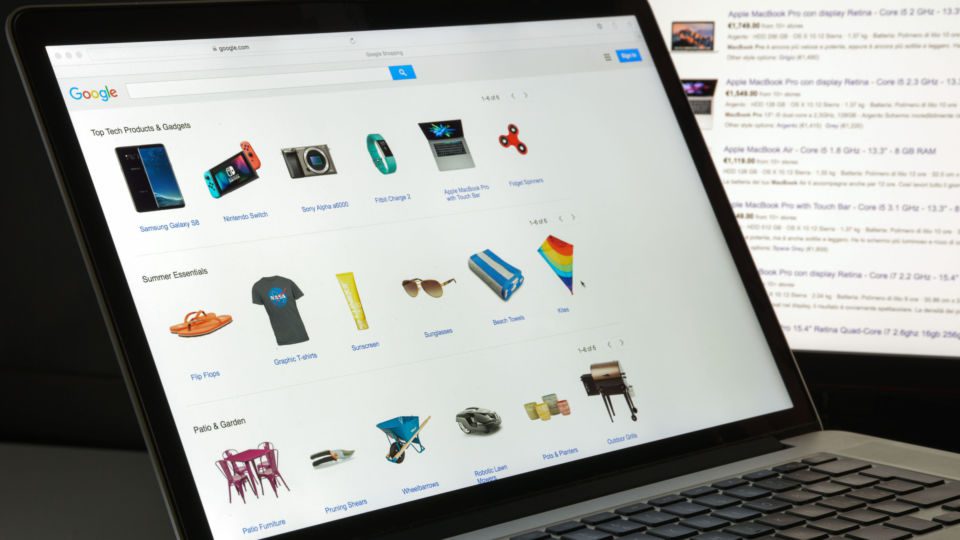 It’s safe to say that the retail industry is going through a revolution. In the world of e-Commerce, Amazon is continually seen as the industry leader, but recently Google has been flexing its retail muscles by opening its shopping platform to advertisers.
It’s safe to say that the retail industry is going through a revolution. In the world of e-Commerce, Amazon is continually seen as the industry leader, but recently Google has been flexing its retail muscles by opening its shopping platform to advertisers.
By capturing users in the research phase and allowing retailers to use valuable consumer data throughout the consumer journey, Google has increased its value proposition for both retailers and users by creating a friction-free experience, thus paving a modern and convenient avenue in online shopping. It’s no surprise that we’ll continue to see e-Commerce brands appearing on Google Shopping as an additional channel.
Consumers are becoming increasingly comfortable with platform purchasing and trust Google now more than ever. Google Shopping is viewed as an advertising platform as far as digital marketers are concerned, but it operates as an online marketplace for consumers. The benefits for retailers that advertise physical products on Google Shopping include: a pricing function tool that allows advertisers to gather insight on competitor pricing and adjust bids accordingly; better visual ads: and increased ROI on non-branded search. For users, the ability to compare products and price points to similar items results in an overall better user experience.
According to NRF research, 38% of online consumers say that convenience is most important during the beginning research stages of their shopping experience. Unlike Amazon, Google operates at the top of the funnel of the consumer journey, where consumers are investing in research. This creates an opportunity for retailers to capture consumers earlier, in higher-funnel stages of the shopping journey, with Google Shopping ads, which create a higher intent-to-purchase rate compared to consumers engaging with text ads.
Advertisement
Because Google Shopping is an open environment and operates in a full-funnel capacity, it allows retailers to leverage consumer data throughout the entire Google ecosystem. This creates added value when compared with other online retail environments like Amazon, which keeps consumer data behind a walled garden. Using Google Shopping, retailers are able to reconnect with consumers in informed and meaningful ways across all Google touch points, from the moment they start their research to when they complete a purchase.
Google Shopping’s pricing functionality is another tool that retailers are using to get ahead on the platform. There are two types of retailers that operate on the Google Shopping platform. Those that are buying and selling directly to consumers like Total Wine, and those that are buying and selling directly to consumers as well as supplying inventory to other retailers, like UGG. The key differentiator between the two is the way they are using the pricing functionality. Some brands use it to undercut the competition; others are concerned with being undercut.
Still, pricing alone isn’t the key to success on the Google Shopping platform. Advertising on the platform requires attention to detail and constant maintenance, which is why it hasn’t been widely mastered yet.
The retailers that will find the most success with Google’s Shopping feature are those that have the most optimized and organized shopping pages and product feeds. For example, if a retailer selling tractor tires is cataloged with standard automobile tires, it will make little headway because the ads won’t appeal to the average shopper looking for new tires. If those tractor tires were categorized based on agriculture and industrial use, the seller would yield much stronger results. It’s imperative retailers have clear and carefully sustained pages and product feeds in order to create better returns on ad spend and create more flexibility on where retailers bid.
If well-utilized, Google Shopping is a tool worth having, and like all things worth having, it requires an investment of time and effort. Therefore, retailers that are looking to invest in the channel should consider a few things, one being how much digital advertising is expected to drive store profits. Brands should consider what the product lifecycle is, as a longer lifecycle necessitates more products and assets.
Retailers should also think about how to keep consumers engaged, as this will bleed into how these brands espouse their value in comparison to others. Digital natives will have an easier time adjusting to the platform than traditional brick-and-mortar retailers. However, many brands will jump on the Google Shopping bandwagon in the next few years, and soon enough brands will be utilizing the platform in all kinds of creative ways.
Sean McDonald is Head of Client Services US at Jellyfish. With over 15 years of experience, he has a demonstrated track record of exceeding revenue targets, inspiring high performing employees and pushing forward digital performance marketing capabilities. At Jellyfish he uses these skills to support clients as they build and expand their digital marketing strategies. Prior to joining Jellyfish, MacDonald held leadership positions at Reprise Media, Marin Software and Digitas, among others.






